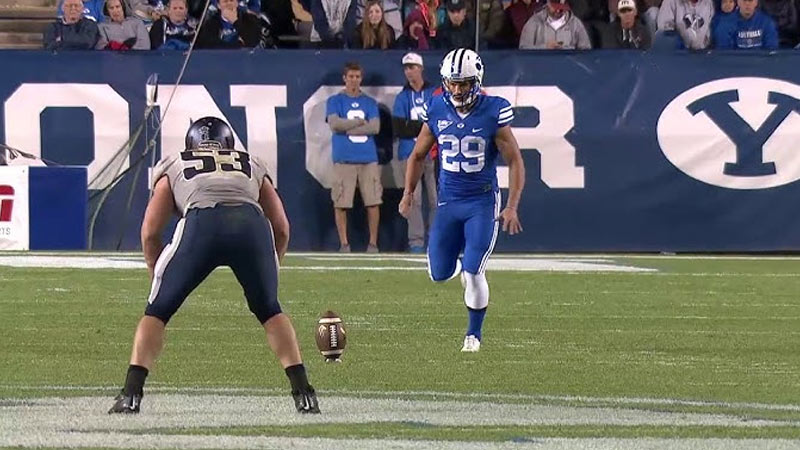In American football, the squib kick is a tactical maneuver with a unique purpose: to disrupt traditional kickoff expectations and minimize the receiving team’s return potential.
Unlike the high, deep kickoffs commonly seen, the squib kick is a low, bouncing kick intentionally aimed at the ground shortly before reaching the receiving team’s players.
This unconventional approach generates erratic bounces, making it challenging for the returner to field the ball cleanly.
Squib kicks are strategically employed in various game situations, such as late-game scenarios, contests against formidable returners, or surprise onside kick attempts.
By understanding the nuances of the squib kick, teams seek to gain a competitive edge in the ever-evolving world of American football.
Squib Kick in American Football -Characteristics and Aspects
A squib kick in American football is a specific type of kick-off strategy used by the kicking team during special teams plays, primarily at the beginning of halves or after scoring.
Unlike the traditional high and deep kickoffs, a squib kick involves a low, short, and often bouncing kick along the ground, aimed at minimizing the potential for a long return by the receiving team.
Here are the key characteristics and aspects of a squib kick:
Low Trajectory
Squib kicks are deliberately kicked with a low trajectory. Instead of a high, booming kick, the kicker aims to keep the ball close to the ground throughout its flight.
Bouncing Ball
The hallmark of a squib kick is the bouncing ball. When the ball makes contact with the ground, it bounces and rolls erratically. This unpredictable bounce makes it difficult for the return team to cleanly field the ball.
Short Target Area
Squib kicks are typically aimed for a spot on the field that is relatively close to the receiving team’s deep returner. This targeted area is chosen to maximize the chances of the ball bouncing awkwardly.
Quick Execution
Squib kicks are executed with less hang time than traditional kickoffs. This means that the ball reaches the receiving team’s players more quickly, giving them less time to set up a return.
Preventing Long Returns
The primary objective of a squib kick is to prevent a long return by the receiving team. The erratic bounce and quick arrival of the ball make it challenging for the returner to build up momentum and break away for a substantial gain.
Field Position Impact
Squib kicks aim to influence field position. If the receiving team cannot field the ball cleanly, they risk losing valuable field position, potentially starting their offensive drive with worse field position than if they had received a traditional kickoff.
Used Strategically
Squib kicks are not used as the default kickoff strategy but rather as a strategic choice in specific game situations. Common scenarios include late-game situations when protecting a narrow lead, facing a dangerous returner, or attempting a surprise onside kick.
Risk and Reward
While squib kicks can be effective in limiting return yardage, they also carry some risks. If not executed perfectly, the receiving team can still gain good field position, and in rare cases, the ball may bounce off an unintended player and be recovered by the receiving team.
Special Teams Strategy
Squib kicks are often integrated into a team’s overall special teams strategy. Coaches may choose to mix in squib kicks with traditional kickoffs to keep the opposition guessing and create uncertainty for the return team.
How a Squib Kick Works
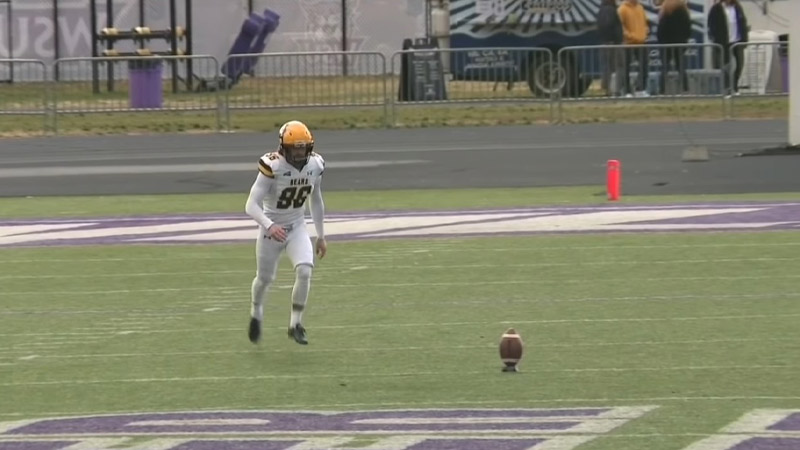
A squib kick in American football is a deliberately low, bouncing kickoff strategy designed to limit the opposing team’s return yardage and field position.
Here’s how a squib kick works:
Kicking Technique
The kicker aims to strike the football with a low trajectory, typically close to the ground. Instead of kicking it high and deep like a traditional kickoff, the objective is to keep the ball low and hard.
Targeted Area
The kicker typically aims for a spot on the field a short distance in front of the receiving team’s deep returner. This area is usually chosen to maximize the unpredictability of the bounce.
Bouncing and Rolling
When the ball makes contact with the ground, it bounces and rolls erratically. This erratic behavior makes it difficult for the receiving team’s players to cleanly field the ball.
It can lead to bobbles, fumbles, or even result in the ball bouncing off a returner and becoming a live ball.
Quick Execution
Squib kicks are executed with less hang time than traditional kickoffs. This means that the ball reaches the receiving team’s players more quickly, giving them less time to set up a return or make a decision on how to handle the kick.
Field Position Impact
The primary goal of a squib kick is to prevent a long return by the receiving team. If the returners cannot field the ball cleanly, they risk losing valuable field positions.
Additionally, the unpredictability of the bounce can force the receiving team to start their offensive drive with a less favorable field position.
When Squib Kicks Are Used in American Football?
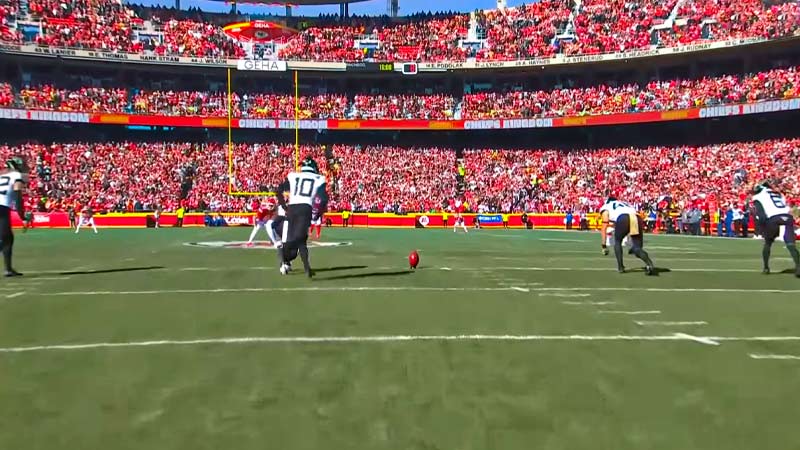
Squib kicks are employed strategically in American football in various game situations to influence field position and minimize the risk of a long return by the opposing team.
Here are some common scenarios in which squib kicks are used:
Late in the Game
Squib kicks are frequently used when a team is leading by a small margin late in the game. By executing a squib kick, the kicking team aims to prevent a deep and potentially game-changing return by the opposing team’s returner.
This strategy helps run down the clock and protect the lead by making it more challenging for the receiving team to gain a favorable field position.
Against Dangerous Returners
Squib kicks are a go-to strategy when facing a particularly skilled or dangerous kick returner on the opposing team.
By keeping the ball low and bouncing, the kicking team hopes to disrupt the returner’s rhythm and prevent them from gaining momentum on the return. This reduces the likelihood of a big play by the returner.
Surprise Onside Kick
Occasionally, teams will use a squib kick as a disguise for an onside kick. This element of surprise can catch the receiving team off guard and increase the chances of the kicking team recovering the ball. Teams may attempt a surprise onside kick when they are trailing and need to regain possession quickly.
Field Conditions
Poor weather conditions or field conditions, such as heavy rain, strong winds, or muddy terrain, can make traditional kickoffs more challenging.
In such cases, teams may opt for squib kicks to minimize the impact of adverse conditions on the game’s outcome.
Special Teams Strategy
Some coaches incorporate squib kicks into their overall special teams strategy as a way to keep the opposition guessing.
By mixing in squib kicks with traditional kickoffs, teams can create uncertainty for the return team and potentially force mistakes or turnovers.
Objectives of a Squib Kick in American Football
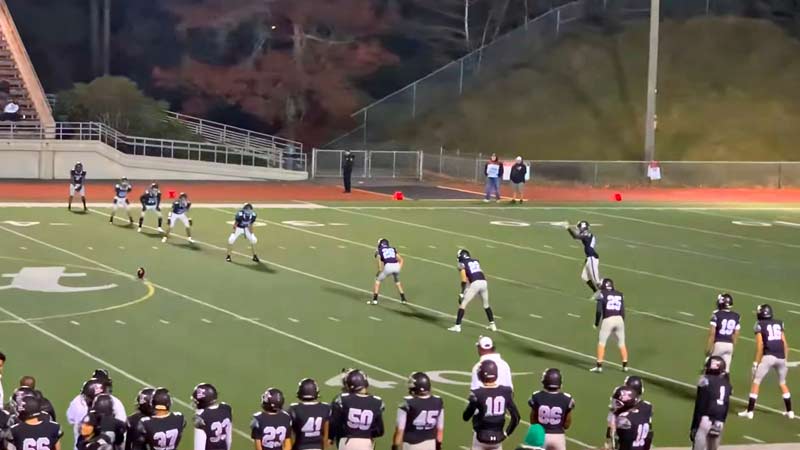
The primary objectives of executing a squib kick in American football are strategic in nature, and they revolve around influencing field position and minimizing the risk of a long return by the opposing team.
Here are the key objectives of a squib kick:
Limiting Return Yardage
The most immediate goal of a squib kick is to prevent the opposing team’s returner from gaining significant yardage on the kickoff return.
By keeping the ball low and bouncing unpredictably, squib kicks disrupt the returner’s ability to cleanly field the ball and build up speed.
Preventing Big Plays
Squib kicks are designed to minimize the chances of a long kickoff return, including the potential for a touchdown.
By creating a less favorable situation for the returner, the kicking team hopes to prevent big plays and maintain control of field position.
Creating Field Position Advantage
Squib kicks can influence field position by forcing the receiving team to start their offensive drive from a less advantageous spot on the field.
If the returner mishandles the squib kick or it bounces unexpectedly, the receiving team may find themselves with worse field position than if they had received a traditional kickoff.
Time Management
In late-game situations when a team is trying to protect a narrow lead, executing a squib kick can help run down the clock.
The squib kick arrives more quickly, leaving less time for the receiving team to mount a return or score, which can be critical when time is running out.
Disrupting Return Plans
Squib kicks can disrupt the return team’s well-practiced plans and formations. The unpredictable bounce of the ball may force the returners to adjust on the fly, potentially causing confusion or missed assignments.
Strategic Surprise
In some cases, a squib kick may be used as part of a surprise onside kick attempt. By disguising the squib kick as an onside kick, the kicking team hopes to catch the receiving team off guard and increase their chances of recovering the ball.
Minimizing Risk
When facing a particularly skilled or dangerous returner, a squib kick can be a safer option than kicking the ball deep, where the returner has more space to make a big play.
Squib kicks are chosen to minimize the risk of a game-changing return by an exceptional return specialist.
Risks and Limitations of Squib Kicks
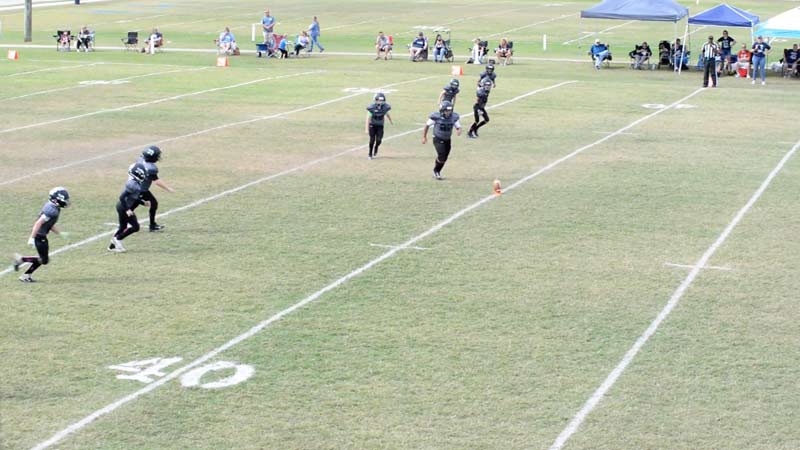
While squib kicks in American football can be strategically advantageous in certain situations, they also come with risks and limitations that coaches and teams must consider when deciding to use this kickoff strategy.
Here are the risks and limitations:
Field Position Risk
A poorly executed squib kick can result in the receiving team gaining good field position. If the ball doesn’t bounce unpredictably or if it goes out of bounds, the opposing team could start their offensive drive with a favorable field position, potentially giving them an advantage.
Recovery by the Receiving Team
In rare instances, the receiving team can recover a squib kick that has been mishandled or bounces off a player on the kicking team.
This can lead to a significant shift in momentum and field position in favor of the receiving team.
Onside Kick Tell
Overusing squib kicks or making them too predictable can give the receiving team an advantage.
They might start to anticipate a squib kick and adjust their return formation accordingly, making it more challenging for the kicking team to surprise them with an onside kick attempt.
Limited Distance
Squib kicks typically don’t cover as much ground as traditional deep kickoffs. This can be a disadvantage if the kicking team is trying to pin the receiving team deep in their own territory. A well-executed squib kick may not reach the same depth as a standard kickoff.
Lack of Hang Time
Squib kicks have less hang time compared to traditional kickoffs. This means that the returner and the receiving team have less time to react and set up their return, but it can also reduce the chances of the ball being mishandled.
Ineffective in Some Situations
Squib kicks are not suitable for all game situations. For example, when a team is trailing by a large margin and needs a quick change of possession, a squib kick may not be the best choice as it doesn’t offer a high probability of recovering the ball.
Execution Challenges
Executing a perfect squib kick is not easy. Kicking the ball low and getting the right bounce requires precision. Any mistakes in execution can result in undesirable outcomes.
Momentum Shift
If the squib kick is unsuccessful and the receiving team manages to field it cleanly, it can lead to a sudden shift in momentum, with the receiving team gaining confidence and better field position.
Famous Squib Kick Moments in American Football
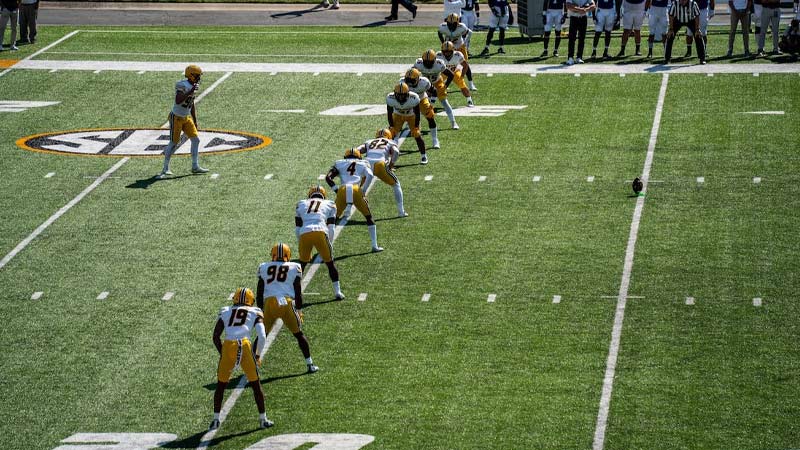
The squib kick strategy in American football has led to several famous and memorable moments throughout the sport’s history.
These moments often involve unexpected outcomes or pivotal plays that have a significant impact on the game.
Here are a few notable squib kick moments:
Super Bowl XLI – Devin Hester’s Opening Return
In Super Bowl XLI, the Chicago Bears faced the Indianapolis Colts. The game started with a squib kick by the Colts to prevent Devin Hester, one of the NFL’s most dangerous return specialists, from making a big play.
However, Hester took the kick 92 yards for a touchdown, becoming the first player in Super Bowl history to return the opening kickoff for a touchdown.
Music City Miracle – 2000 AFC Wild Card Game
In the 2000 AFC Wild Card Game between the Buffalo Bills and the Tennessee Titans, the Bills executed a squib kick with 16 seconds left, leading 16-15.
The Titans used a trick play known as the “Music City Miracle” to return the squib kick for a game-winning touchdown, one of the most famous plays in NFL history.
2007 Fiesta Bowl – Boise State vs. Oklahoma
In one of the most memorable college football games ever played, the 2007 Fiesta Bowl featured an overtime squib kick by Boise State in the fourth quarter to try to secure a win.
Oklahoma’s returner, however, managed to return it for a touchdown, sending the game into overtime, where Boise State ultimately won with a famous Statue of Liberty play.
2015 Rose Bowl – Oregon vs. Florida State
In the 2015 Rose Bowl between Oregon and Florida State, the Ducks executed a squib kick late in the first half.
Florida State’s returner, Levonte Whitfield, fielded the kick and returned it 100 yards for a touchdown. This play is often remembered for its speed and the impact it had on the game.
Patriots vs. Jets – 1994 AFC Wild Card Game
In a 1994 AFC Wild Card Game between the New England Patriots and the New York Jets, the Patriots used a squib kick late in the game, hoping to prevent a big return by the Jets.
However, the Jets’ Kenbrell Thompkins managed to return the squib kick 40 yards, setting up the game-winning field goal for the Jets.
What to Do if You Get Hurt by a Kick?
If you get hurt by a kick in American football, it’s important to take immediate steps to assess and address your injury.
Here’s what you should do:
Stop Play
If you’re on the field and get injured by a kick, it’s crucial to stop play immediately. Signal to the referees or your teammates that you need assistance and that play should be halted.
Stay Down
If you’re in pain or unsure of the extent of your injury, it’s generally best to stay down on the field until medical personnel can assess your condition. Attempting to get up and walk off the field on your own may worsen the injury.
Medical Evaluation
Seek immediate medical evaluation from trained medical personnel, such as team trainers, doctors, or paramedics. They will assess your injury, provide initial treatment, and determine whether you can safely continue playing or need further medical attention.
Follow Medical Advice
Follow the advice and recommendations of medical professionals. If they advise you to leave the game or sit out for a period, it’s essential to heed their guidance for your safety and long-term well-being.
RICE Protocol
If it’s a minor injury and medical professionals approve, you can follow the RICE protocol:
- Rest: Give the injured area time to heal by avoiding further stress or strain.
- Ice: Apply ice to the injured area to reduce swelling and pain. Use a cloth or towel to protect the skin and limit ice application to 15-20 minutes at a time.
- Compression: Use a bandage or compression wrap to help control swelling and provide support to the injured area.
- Elevation: Keep the injured area elevated to minimize swelling. This is especially helpful for lower extremity injuries.
Pain Management
Follow any prescribed pain management strategies provided by medical professionals, which may include over-the-counter or prescription medications.
Rehabilitation
If your injury requires more extended recovery, follow a rehabilitation plan designed by medical experts and physical therapists.
This plan may include exercises, stretches, and mobility work to aid in your recovery and prevent future injuries.
Communication
Keep your coaches, teammates, and athletic trainers informed about your injury and progress. Open communication ensures that your recovery is well-monitored, and adjustments can be made to your training regimen as needed.
Mental Health
Injuries can be mentally challenging. Seek support from sports psychologists or counselors if necessary to cope with the emotional aspects of being injured and to maintain a positive attitude during recovery.
Return to Play Safely
Only return to play when you have received medical clearance and are confident that you can perform without risking further injury. Rushing back too soon can lead to re-injury.
When a Kick Goes Wrong?
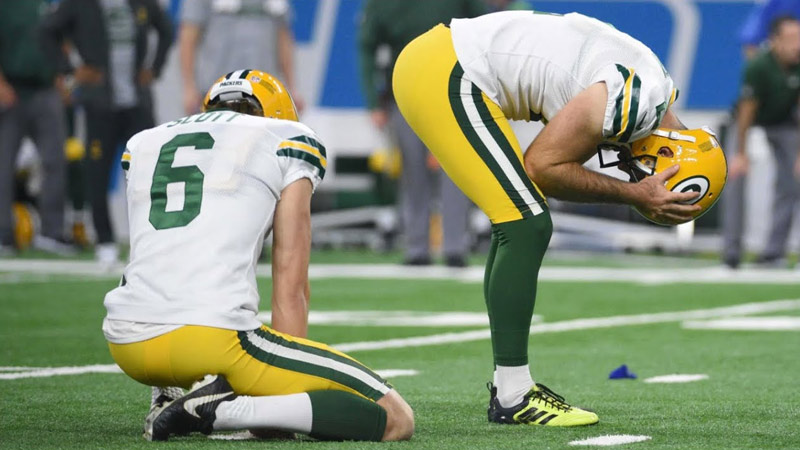
When a kick in American football goes wrong, it can result in various unfavorable outcomes for the kicking team.
Several situations can be considered when a kick goes wrong:
Kicked Out of Bounds
If a kickoff goes out of bounds without first touching a player on the receiving team, it’s considered a kicking team penalty.
The receiving team gets the ball at a predetermined spot, typically with improved field position.
Short Kickoff
A kick that doesn’t travel the intended distance, known as a short kickoff, can give the receiving team better field position. The returner may field the ball with a running start, increasing the likelihood of a good return.
Failed Onside Kick
An onside kick that fails to travel the required 10 yards before being touched by a receiving team player results in a turnover.
The opposing team gains possession at the spot where the ball was touched, often with excellent field position.
Blocked Kick
If the opposing team successfully blocks a field goal or extra point attempt, it can lead to a significant momentum shift.
The opposing team may recover the blocked kick and attempt to return it for a touchdown or gain excellent field position.
Missed Field Goal or Extra Point
A missed field goal or extra point results in a loss of potential points for the kicking team. The opposing team then takes over possession from the spot where the ball was last snapped.
Kicker Injury
Occasionally, a kicker can get injured during the kicking process, potentially impacting the team’s ability to execute future kicks and field goals.
Kicked Ball Hitting a Player
If a kicked ball inadvertently hits a player on the kicking team or an obstruction on the field (e.g., the goalpost), it becomes a live ball.
The opposing team may recover the ball or gain possession based on the rules governing such situations.
Blocked Punt
In punting situations, a blocked punt can result in disastrous field position for the kicking team or even lead to the opposing team scoring a touchdown.
Kickoff Return for a Touchdown
A poorly executed kickoff can lead to a long return by the receiving team, resulting in a touchdown. This is often a result of a kick that is too short, too deep, or lacks hang time.
Mishandled Onside Kick
In onside kick attempts, if the ball is mishandled by a player on the kicking team, it can be recovered by the opposing team, putting them in a favorable position.
FAQS
What is the main advantage of using a squib kick strategy?
The primary advantage of a squib kick is its ability to disrupt the opposing team’s return plans, minimizing the risk of a long return or a touchdown.
Can a squib kick be recovered by the kicking team?
Yes, a squib kick can be recovered by the kicking team if it travels the required 10 yards and is not touched by the receiving team.
Are squib kicks commonly used on kickoffs after a safety?
Squib kicks are often used on kickoffs after a safety, as the kicking team wants to avoid a deep return and maintain field position.
Can a squib kick be fair-caught by the receiving team?
Yes, a squib kick can be fair-caught by a receiving team player. If the returner signals for a fair catch, they are protected from being tackled, and their team gains possession at the spot of the fair catch.
Is a squib kick the same as an onside kick?
While both squib kicks and onside kicks aim to limit return yardage, they are not the same.
An onside kick is designed for the kicking team to recover possession, while a squib kick’s primary goal is to disrupt the return and field position.
Wrap Up
In American football, the squib kick is a strategic departure from conventional kickoff tactics, deliberately low and bouncing to defy expectations. Its purpose is to thwart the receiving team’s return plans, disrupt momentum, and influence field position.
A squib kick, with its erratic bounces and quick arrival, introduces an element of chaos into the game, demanding nimble reactions from both teams. Employed judiciously, it can be a game-changer, stifling potential long returns and altering the complexion of critical moments.
However, the squib kick is not without risks, as its execution requires precision, and mishaps can lead to unintended consequences. In sum, the squib kick epitomizes the strategic complexity of American football, offering both opportunity and peril in the pursuit of victory.

